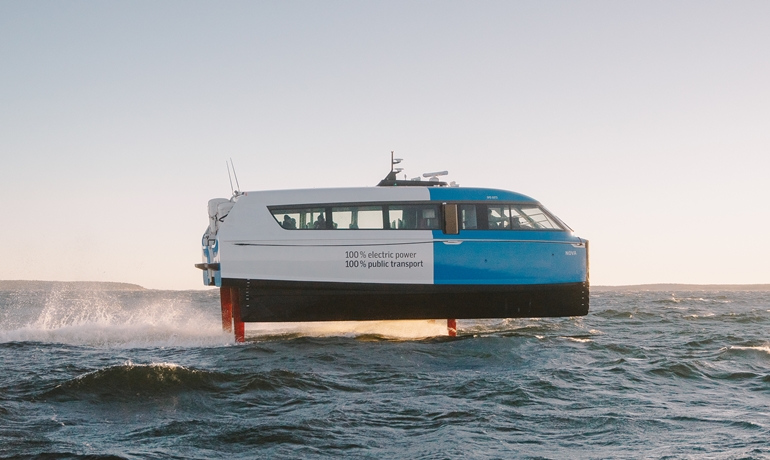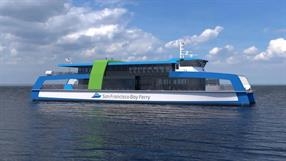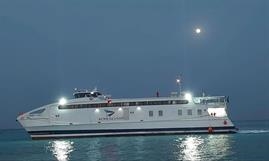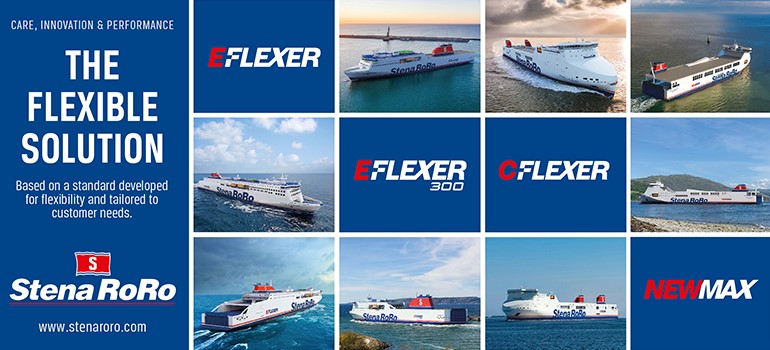
Candela P-12 Nova
The world’s first "flying" electric ferry deemed a success – Stockholm Expands Service
High-speedAfter a short winter break, the world’s first electric hydrofoil ferry is about to take to the waters of Stockholm again.
New data from autumn operations shows that NOVA is a success – both among passengers and for the climate.
Candela P-12 is the world’s first passenger ferry that combines electric propulsion with hydrofoil technology, allowing it to literally fly above the water surface – with lower energy consumption and higher speeds. The first unit, named NOVA, has operated in Stockholm’s public transport system during the autumn.
As service resumes on 15 April after the ice season, new statistics from Region Stockholm confirm that the vessel is a major success – both for passengers and the environment.
NOVA emits 95% less CO2 compared to the conventional diesel-powered vessels LUX and SUNNAN, which operate the same route, and uses 84% less energy per passenger-kilometre.
At the same time, statistics show that NOVA is popular; occupancy rate is around 80%, and most departures have been fully booked – often with long queues. The popularity stems from NOVA reducing travel time between Tappström (Ekerö center) and Stockholm City Hall to 30 minutes, compared to about an hour by car or bus.
The data also shows that NOVA attracts more people to travel on water, with a 30% increase in ridership on route 89.
“NOVA is drawing commuters to the other vessels as well. That’s especially exciting, since one of our goals is to show that with fast, comfortable waterborne transport, we can get car commuters to switch modes,” says Gustav Hasselskog, CEO and founder of Candela.
Region Stockholm, which operates the service, will now increase NOVA’s service from five days a week to six this spring – and to daily operations by May.
In August, the trial will be evaluated, and Candela hopes that the P-12 can then be used on additional routes – including Stockholm’s archipelago, one of the largest in the world.
The Candela P-12 NOVA, with a cruising speed of 25 knots, is the fastest electric ship in the world. It is also faster than Stockholm’s fastest diesel-powered archipelago ferries. Thanks to its smaller size, the vessel is particularly well-suited to areas with lower passenger demand – where its high speed and low operating costs enable a more efficient transport system.
Candela already has P-12 customers around the world – from Saudi Arabia to New Zealand and the USA.
“We are incredibly happy that Region Stockholm has enabled us to demonstrate the hydrofoil technology in the city's public transport. We see that waterways in most cities have enormous potential for fast, low-cost, and emission-free transport that can relieve road networks and increase accessibility. This is just the beginning," says Gustav Hasselskog.
Facts:
- NOVA’s CO2 emissions: 23 g/pkm; the average for other vessels on the route is 439 g/pkm.
- NOVA’s energy consumption: 0.39 kWh/pkm; the average for other vessels on the route is 3.31 kWh/pkm.
- Fastest travel time with NOVA direct between Tappström and Klara Mälarstrand: approx. 30 minutes (with speed exemption at 22 knots from Gröndalsbron to City Hall). Other boats on the line take 45–55 minutes depending on number of stops.
- 120 departures completed
- 2,326 total passengers
- Occupancy: 80.83%, in reality higher due to onboard training personnel.
Apr 10 2025
Most read
CLdN announces multi-million-pound investment in Killingholme terminal
Mar 31 2025
New Managing Director for AML Appointed
Mar 31 2025




















